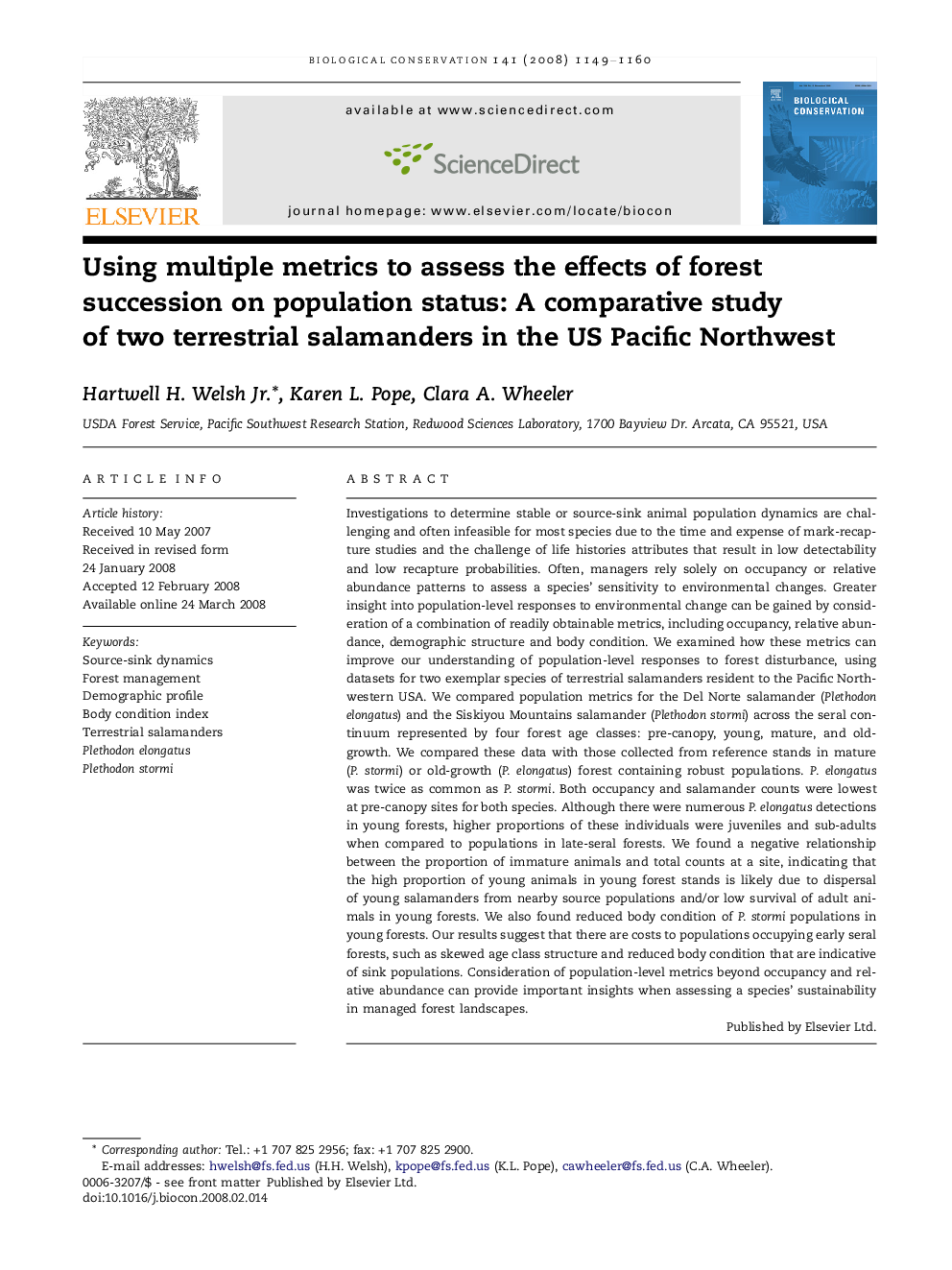| کد مقاله | کد نشریه | سال انتشار | مقاله انگلیسی | نسخه تمام متن |
|---|---|---|---|---|
| 4386706 | 1304575 | 2008 | 12 صفحه PDF | دانلود رایگان |

Investigations to determine stable or source-sink animal population dynamics are challenging and often infeasible for most species due to the time and expense of mark-recapture studies and the challenge of life histories attributes that result in low detectability and low recapture probabilities. Often, managers rely solely on occupancy or relative abundance patterns to assess a species’ sensitivity to environmental changes. Greater insight into population-level responses to environmental change can be gained by consideration of a combination of readily obtainable metrics, including occupancy, relative abundance, demographic structure and body condition. We examined how these metrics can improve our understanding of population-level responses to forest disturbance, using datasets for two exemplar species of terrestrial salamanders resident to the Pacific Northwestern USA. We compared population metrics for the Del Norte salamander (Plethodon elongatus) and the Siskiyou Mountains salamander (Plethodon stormi) across the seral continuum represented by four forest age classes: pre-canopy, young, mature, and old-growth. We compared these data with those collected from reference stands in mature (P. stormi) or old-growth (P. elongatus) forest containing robust populations. P. elongatus was twice as common as P. stormi. Both occupancy and salamander counts were lowest at pre-canopy sites for both species. Although there were numerous P. elongatus detections in young forests, higher proportions of these individuals were juveniles and sub-adults when compared to populations in late-seral forests. We found a negative relationship between the proportion of immature animals and total counts at a site, indicating that the high proportion of young animals in young forest stands is likely due to dispersal of young salamanders from nearby source populations and/or low survival of adult animals in young forests. We also found reduced body condition of P. stormi populations in young forests. Our results suggest that there are costs to populations occupying early seral forests, such as skewed age class structure and reduced body condition that are indicative of sink populations. Consideration of population-level metrics beyond occupancy and relative abundance can provide important insights when assessing a species’ sustainability in managed forest landscapes.
Journal: Biological Conservation - Volume 141, Issue 4, April 2008, Pages 1149–1160